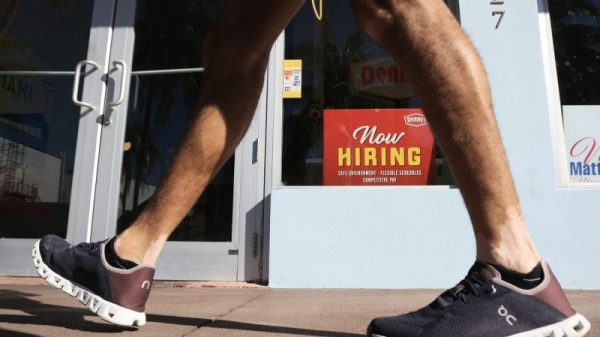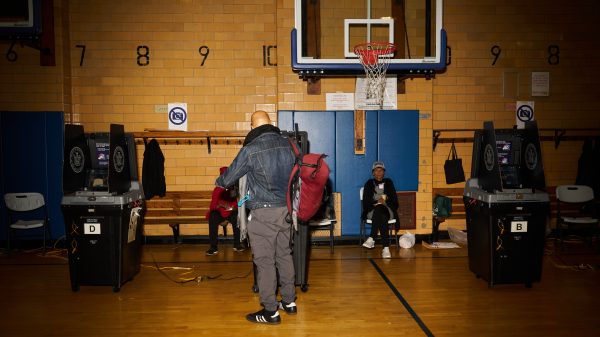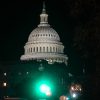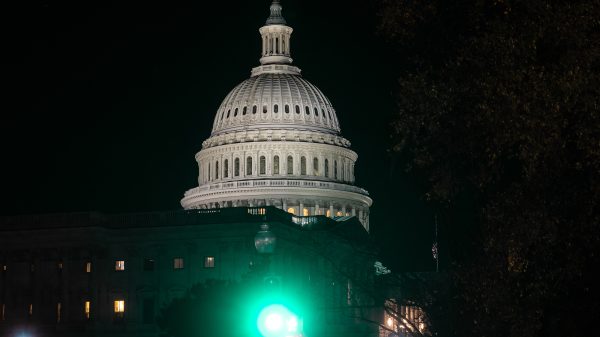ALBANY, New York — Zohran Mamdani’s decisive win in New York City — along with key victories in New Jersey and Virginia — suggested Democrats are headed into the midterms from a position of strength. But they didn’t capture how deep that strength ran.
Across suburbs, rural counties and small towns in New York, Democrats posted electoral gains that rival — and in many cases surpass — the party’s 2017 “Blue Wave.” In a state with enough competitive House races to decide control of the chamber, the outcome amounts to a wakeup call for already-wary Republicans.
New York Democrats once viewed the 2017 elections as among their best ever. The Blue Wave that year was driven by purple suburbs making a hard shift left. This year in New York, that tilt was felt even more widely — with Democrats in every corner of the state pointing to economic uncertainty exacerbated by President Donald Trump’s policies as voters’ top concern.
“It was about peoples’ anxiety,” said Leslie Berliant, who ousted a Republican incumbent to win a seat in the Otsego County Legislature. “It definitely was a feeling that we don’t feel protected by what’s happening in the federal government, and we need to make sure we have people in place at the local level who care about our needs. Democrats ran on that, and I think it worked.”
Much of the early narrative from this fall’s elections has cast Democrats’ gains as occurring mostly in places where they often win. An examination of every race on the ballot in New York shows the shift was far more widespread, with Democrats having their best-ever performances in numerous deep red towns and rural areas.
There’s still plenty of time for conditions to change before the 2026 midterms. But a year out, this year’s contests offered very little solace for Republicans as they prep for seven battleground congressional races in New York and a gubernatorial election in which they hope to build on the rightward momentum of the 2022 and 2024 elections.
A POLITICO review of results in 268 county, town and village executive branch races found an average 10 point increase in the Democratic margin.
Democrats made gains in at least 18 different county legislative bodies in November, flipping over 50 seats across the Empire State. They gained five seats in Oswego County, which Trump won by 27 points in 2024. They picked up five in Ulster by making inroads in towns that have been Republican for generations, winning their largest majority in county history. And they flipped five in Onondaga and gained their first majority there since the 1970s.

For Republicans, the outcome painted a bleak picture: GOP candidates flipped one county legislative seat in the entire state.
Democrats who won these local contests shared similar stories about what they saw on the ground. Trump voters didn’t necessarily throw their MAGA hats into bonfires. But economic anxiety persists in every corner of the state. And Republican voters feeling the pinch — whether over federal cuts, tariffs, or inflation — are now at least willing to hear a pitch from Democrats.
In the town of Erwin, just north of the Pennsylvania border, Democrat Debbie Shannon ousted Republican Steuben County Legislator James Kuhl, the son of a former congressman.
“I knocked on everyone’s door, and the economy is the big hot button issue,” Shannon said. “Especially for Republicans who said Trump ran on ‘I’m going to lower the price of eggs,’ and that isn’t happening. I think they’re breaking with the administration.”
This November was only the second time since 1989 that Democrats won mayoral races in each of the state’s five largest cities. Sharon Owens was the first Democrat elected Syracuse’s mayor in 12 years, Sean Ryan received the most votes in a contested Buffalo race since 1981, and Mamdani received more votes than any Democratic nominee in New York City since at least 1965.
Democratic performance in places that were once untouchable Republican strongholds is perhaps more notable when looking ahead to next year. Consider, for example, the Rochester suburbs: Penfield elected a Democratic supervisor for the first time in four decades, Greece for the first time in 120 years, and Perinton for the first time since the Civil War.

Democrats also flipped mayoral or supervisor offices in places like Tonawanda, Oneonta, Monroe, Rensselaer, Johnson City and Riverhead.
All told, there were 118 municipal executive races outside of New York City this year that were contested in either 2021 or 2023. The number of ballots cast for Democrats grew from 1.3 million to 1.6 million, a 22 percent increase. The number for Republicans grew 1 percent to 1.6 million.
That means that while the typical upstate or Long Island Democrat lost by 10 points in the last go-around, they received 50 percent of the vote this year.
Even in places where Republicans had good nights, there’s little evidence of a broader rightward shift. Republicans made gains in Saratoga Springs, but not as many as Democrats made in the larger, neighboring town of Clifton Park. Nassau County Executive Bruce Blakeman won big in his reelection campaign. But Democrats improved on their performance in 17 of the other 21 executive offices on the ballot on Long Island. And in the other major suburban county, Westchester’s Ken Jenkins had the best performance by a Democratic county executive candidate in two decades.
The Democratic gains were thus much broader than those in 2017. The following year, New York Democrats flipped three congressional seats, and the number of people voting for Andrew Cuomo in the gubernatorial contest grew 76 percent in 2018 compared with 2014.
All of that is promising to Democrats like Gov. Kathy Hochul who are on the ballot in 2026. The Republican path to a statewide victory involves running up the numbers in red parts of the state, doing well in suburban towns and minimizing the Democratic margin in New York City. All three of those need to happen in 2026 for a GOP win to be plausible in statewide contests — and this November, none of them did.
But there were also hints of an anti-establishment trend mixed in with the leftward shift — and certainly more than a glimmer of that in New York City. That trend makes forecasting Hochul’s fate a little less clear come next June or November.
Not everybody who won said they did so by running on a Democratic platform. Candidates in the rural North Country, for example, attempted to outdo each other in criticizing Hochul’s handling of a prison strike earlier this year.
Voters are looking “for leadership that kind of ignores traditional party stances,” said Lebanon Supervisor-elect Adam Carvell, who noted he wasn’t focused on purely partisan issues before receiving 63 percent of the vote as a Democrat in a town where Trump received 60 percent last year. The electorate, he said, wasn’t just bothered by the White House’s actions, but policies supported by the sitting Democratic governor, such as an electric vehicle mandate.
“The municipal electrical vehicle mandate that was coming down, it’s a Hochul thing,” said Carvell. “The boots-on-the-ground take on that here is that’s unworkable … The idea of introducing very expensive, hard to maintain [electric snow plows] scared a lot of people.”
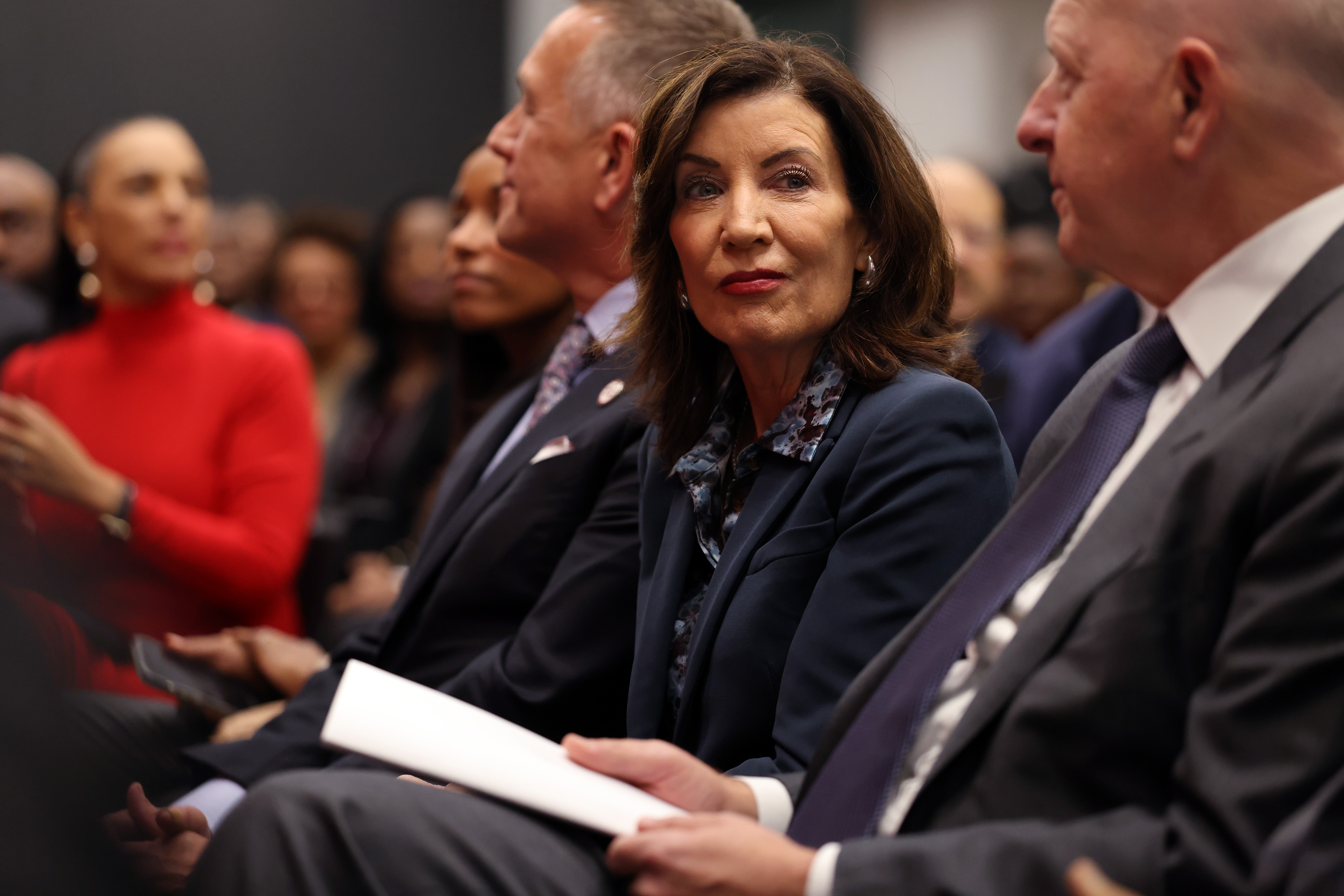
Yet even the candidates who eschewed strict partisanship repeatedly highlighted the federal government and its role in the economy as the top concern on voters’ minds.
Don Dabiew, who won a seat in Franklin County’s Legislature, pointed to a hit to Canadian tourism.
“Almost all the small towns around are seeing an impact of that because people aren’t coming across anymore,” Dabew said. “There’s some people that are upset with our country as a whole, and they don’t want to support us anymore.”
In Canandaigua, mayor-elect Thomas Lyon highlighted federal cuts.
“DOGE was eliminating jobs left and right,” he said. “The national veterans’ suicide hotline is located here in Canandaigua at our VA, and you had people losing their jobs, not being able to provide support to our veterans.”
Even in local elections where partisanship wasn’t rampant, Democrats said the current frustrations about the country as a whole are opening doors that hadn’t been open before.
“We listened and said, ‘We’re not talking about federal politics here; we’re talking about right here, right now, our town,’” said Lisa Moore, who won the South Bristol supervisor’s race.
“A lot of people were just so sick and tired of the divisiveness at the federal level, and the sort of miserableness, that they were happy to not demonize Democrats, as Democrats have been demonized in our town in the past.”



